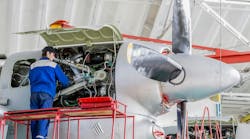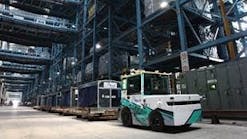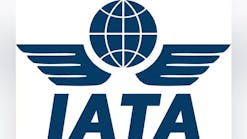Why Falls Occur: Interpreting Underlying Causes of Falls from Heights
Most falls that occur in the workplace are avoidable tragedies. It is the belief of the Occupational Health and Safety Administration (OSHA) that 100 percent of fall events can be prevented. This author shares that belief, if the proper equipment, training and procedures are implemented by an organization.
In 2021, the Center of Construction Research and Training (CPWR) performed a survey of workers who had experienced, witnessed or investigated a workplace fall incident. This article will discuss some of the study’s key findings but focus on the three main causes of falls identified by the study and how proactive solutions can help prevent future falls.
Insufficient or Ineffective Planning
Lack of proper planning was the primary cause of falls, according to survey respondents. The common phrase, “if you fail to plan, you plan to fail,” rings true when regarding protecting workers against fall hazards. The main purpose of an organization’s fall protection program should be to identify all fall hazards and establish control measures to mitigate risk.
Additionally, employers should have clear communication channels established so workers can notify safety leadership of new potential hazards as they arise. The fall protection plan should be a living, breathing document that is eligible for improvement/adaptation whenever a change occurs in the workplace. If employers routinely assess facilities for fall hazards and employees are vigilant in identifying new fall hazards, fall hazards should not go unidentified long at the facility.
Regular training is also an essential part of planning the fall protection program. The program can only be successful if workers are trained in corporate policies, OSHA/ANSI regulations and guidelines, and proper use of equipment.
The survey suggests that a lack of planning is associated with a lower likelihood of employees using fall protection. If that’s the case, then one way to raise user compliance rates would be to simply conduct more pre-task planning incorporating the use of the required fall protection equipment.
Fall Protection Equipment Provided, but Not Used
This survey identified that neglecting to use fall protection equipment was the second leading cause of occupational falls. As most safety managers know, providing a fall protection solution is just one problem. Getting workers to use it is another.
Employers must be sure their trainings educate workers on the importance of always wearing fall protection equipment at heights. Employers must be clear that wearing protective equipment is sometimes the only way to prevent injury if an incident occurs. If a company makes it known that fall protection is required in certain areas or during certain tasks, employees are eight times more likely to use fall protection equipment, according to the survey.
Furthermore, almost half of survey respondents reported that no fall protection equipment was being used at the time of the fall. While there is still some risk for injury while using protective equipment, there is no hope for protection if the equipment is completely neglected.
Improper Use of Fall Protection
Using fall protection equipment is important. Using it properly is even more important. Unfortunately, improper use of fall protection was the third leading cause of falls, according to the survey. Some people like to say, “something is better than nothing,” but that isn’t always true regarding fall protection equipment.
In this survey, almost 60 percent of the fatal falls occurred while individuals were using fall protection. The importance of using the right equipment for the right job and to use it properly cannot be understated.
Personal protective equipment (PPE) that is being misused can expose a worker to as much risk of injury as fatality as a worker using no equipment. For example, a loose harness during a fall can cause injury when the leg straps hit the groin area, or an anchor failure can be caused if a worker installs the anchor in a way not allowed by the manufacturer.
Conclusion
When employees are properly made aware of the risks related to working at heights, trainings should be seen as opportunities to learn how to work safer, not a reprimanding exercise from leadership. Ideally, the safety culture at an organization will be one where workers are encouraged to find hazards and help find solutions so they can work safer and more productively.
Rather than a culture where safety leadership is more interested in protecting the employer from liability, and workers feel intimidated to bring up safety concerns. In fact, the Occupational Safety and Health Act of 1970 protects employees from employer retaliation when they report unsafe working conditions.
The underlying causes for why falls occur can be vast, complicated, and difficult to resolve. If we want to have fewer fall injuries and fatalities, we must begin by preventing falls from occurring in the first place. If empowering workers to work safely and communicate hazards is how we can begin prevent falls today, then designing facilities and machinery designed with worker safety in mind is how we can prevent falls tomorrow. Either way, putting worker safety in the forefront will put an organization on the trajectory of progress.
Survey Source: Underlying Causes of Falls from Heights
Authors: Grace Barlet , Rosa Greenberg, Jessica Bunting








